SOURCE
WHY?
Immune microenvironments vary profoundly between patients and biomarkers for prognosis and treatment response lack precision To pinpoint predictive cellular states of tumor immune cells and their spatial localization
HOW?
Analyzing >500,000 cells from 217 patients and 13 cancer types Data projection: Seurat's anchor-transferring method Using SPOTlight to combine single-cell and spatial transcriptomics data and identifying striking spatial immune cell patterns in tumor sections ShinyApp (in progress) to project external data and to apply the immune classifier
GET WHAT?
GET 1: Generating a tumor immune cell atlas
Collected scRNA-seq datasets from 13 different cancer types, 217 patients and 526,261 cells
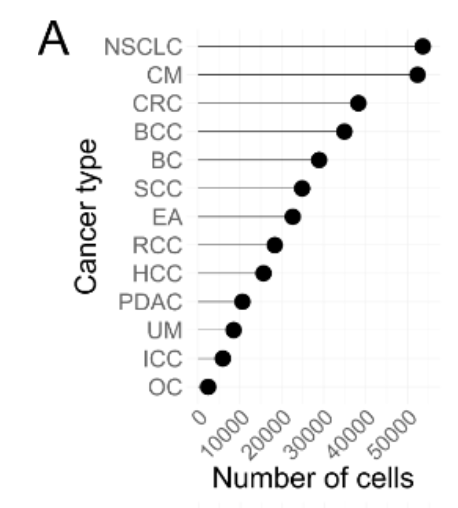
Immune cells clustered by cell identity rather than patient origin: integrated 317,111 immune cells using canonical correlation analysis => 25 clusters 
Get 2: Tumor subtype classifier
For Current: to establish a pan-cancer immune classification system
used immune cell type and state frequencies of the reference atlas as input for similarity assessment across the 13 cancer types 
A hierarchical k-means clustering using immune cell proportions as features defined six clusters with largely different compositions (almost all cancer types were presented in each cluster)
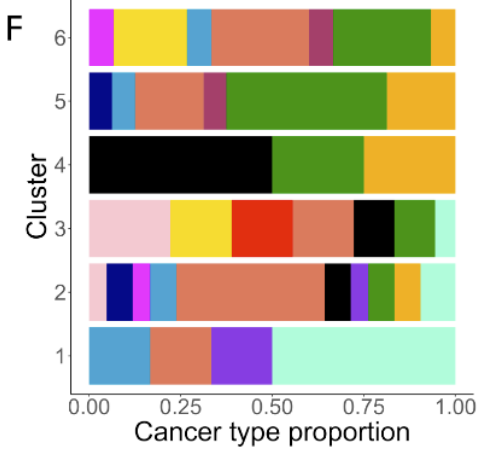
For future: to facilitate the classification of immune profiles
trained a RF(random forest) classifier with the 25 immune cell population achieving a highly accurate classification using the classifier, the pan-cancer immune classification system could be extended to additional cancer types
GET 3: A resource for immune cell annotation
To demonstrate the potential value of the atlas
The applicability of the atlas as reference across different cancer types
First: Project cells onto atlas using a reference-based projection (Fig. A)
Next: Typical clustering matching (Fig. B)

Third: Check correlation (Fig. C)
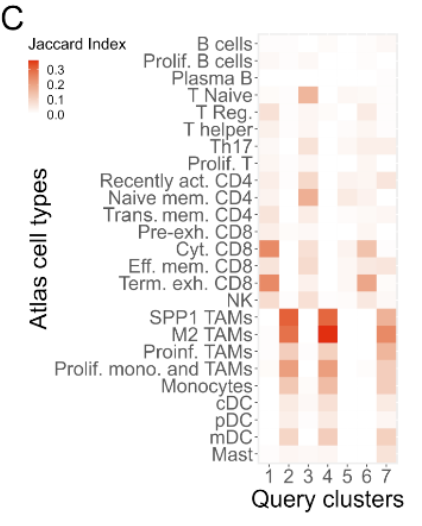
The applicability of the atlas as reference across species
two liver metastases derived from mouse CRC organoids main subtypes and specific subpopulations could also be assigned using the human reference 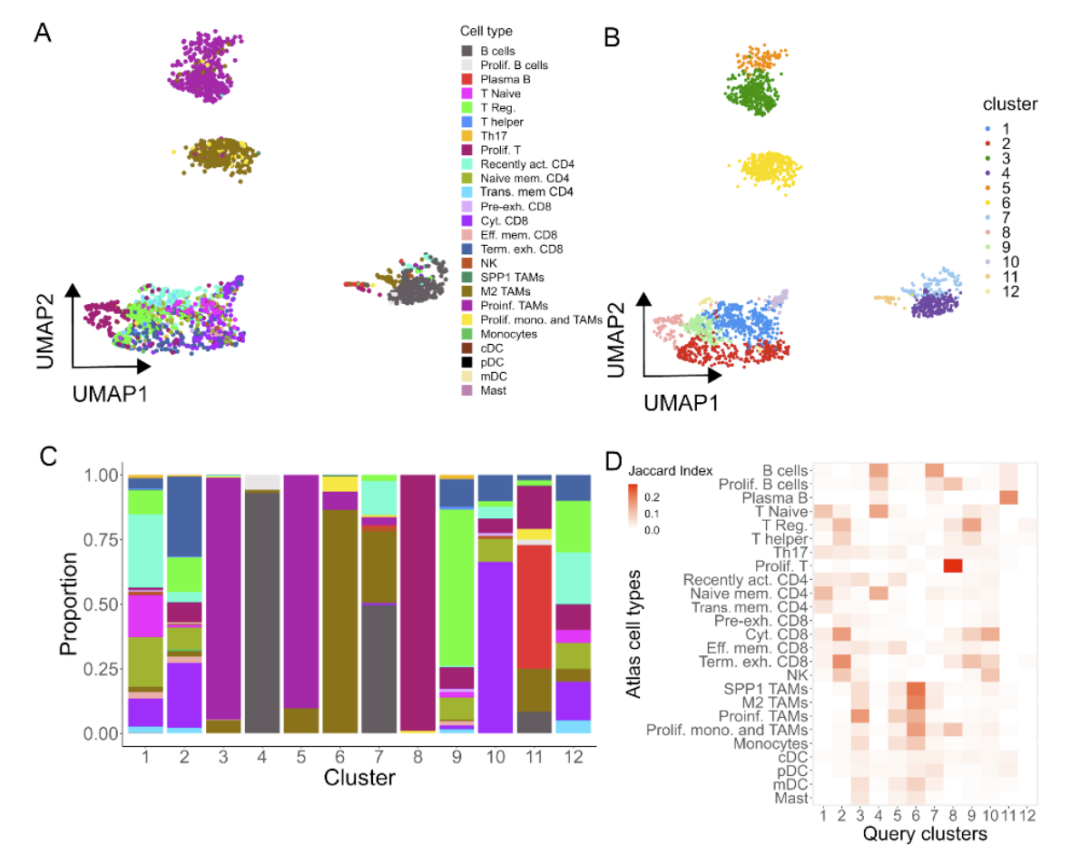
GET 4: Spatial localization of immune cells in tumor sections
Spatial distribution of immune cells is important for ICI (immune checkpoint inhibitors) response
Single-cell reference atlas immune profiles + Spatial transcriptome data
SPOTlight : non-negative matrix factorization (NMF) based spatial deconvolution framework
Analysis of oropharyngeal squamous cell carcinoma (SCC)
cluster 1/2 (cancer cells) is surrounded by cluster 0 (stroma) and cluster 3 (immune cells)

cluster1/2 presented a similar immune infiltration pattern, with an enrichment of proliferative T-cells and SPP1 macrophages
cluster 3 presented a distinct immune infiltration pattern characterized by an enriched presence of (proliferative) B-cells
cluster 0 harbored regulatory T-cells and terminally exhausted CD8 T-cells and was specifically enriched in M2 macrophages and naive T-cells.

Analysis of ductal breast carcinoma (BC)
also get a cancer-specific regional distribution:
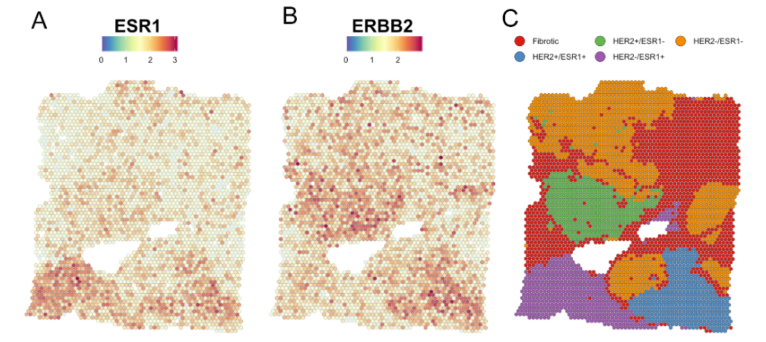
subclonal was directly associated with local enrichment of distinct immune cell states
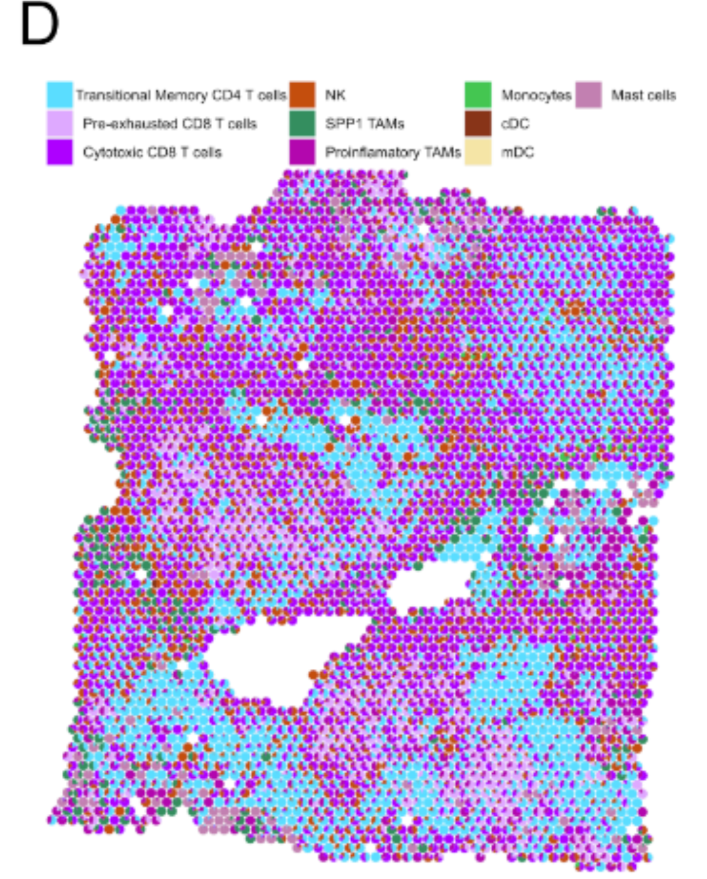
Foresee the regional distribution of immune cell types to become an important feature for the prediction of immuno-therapy outcome.













